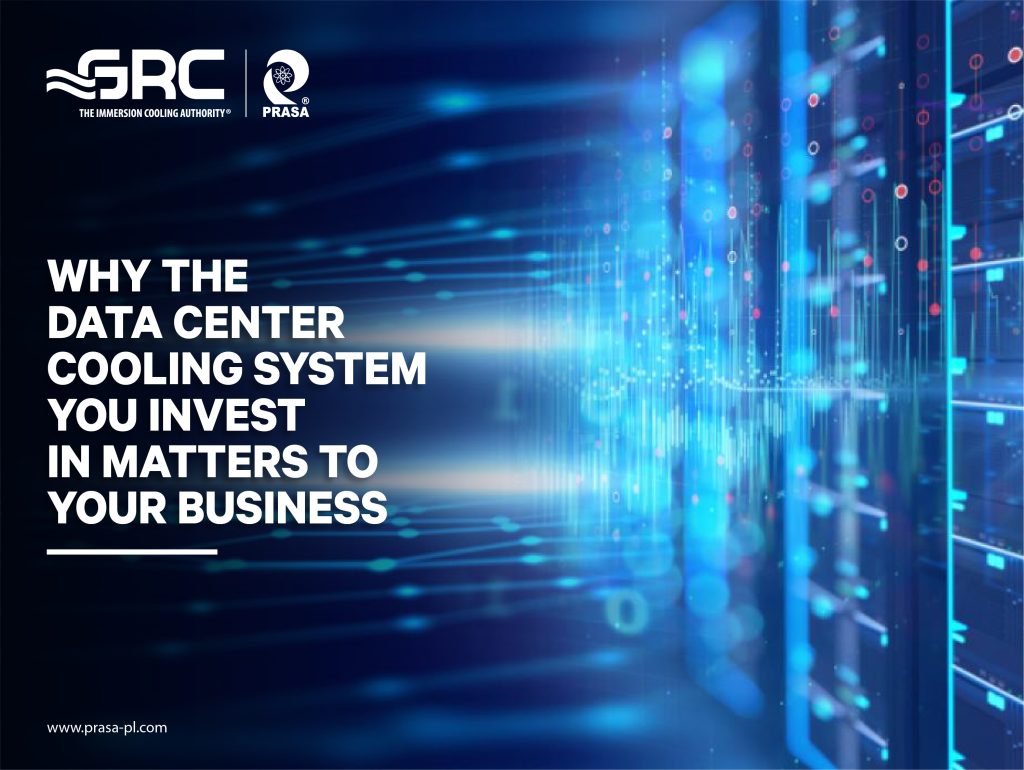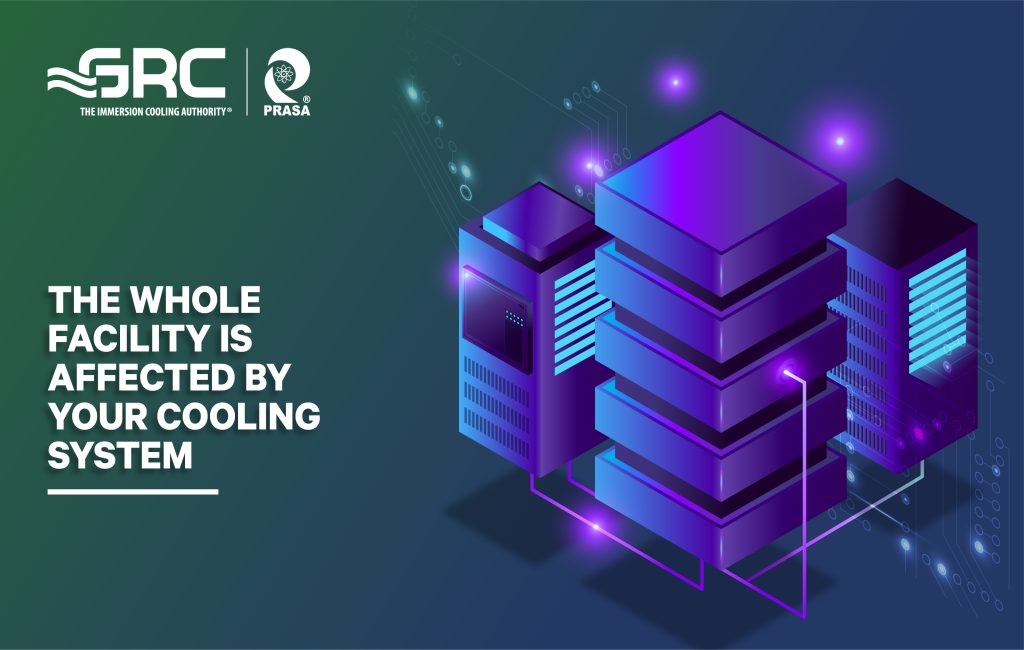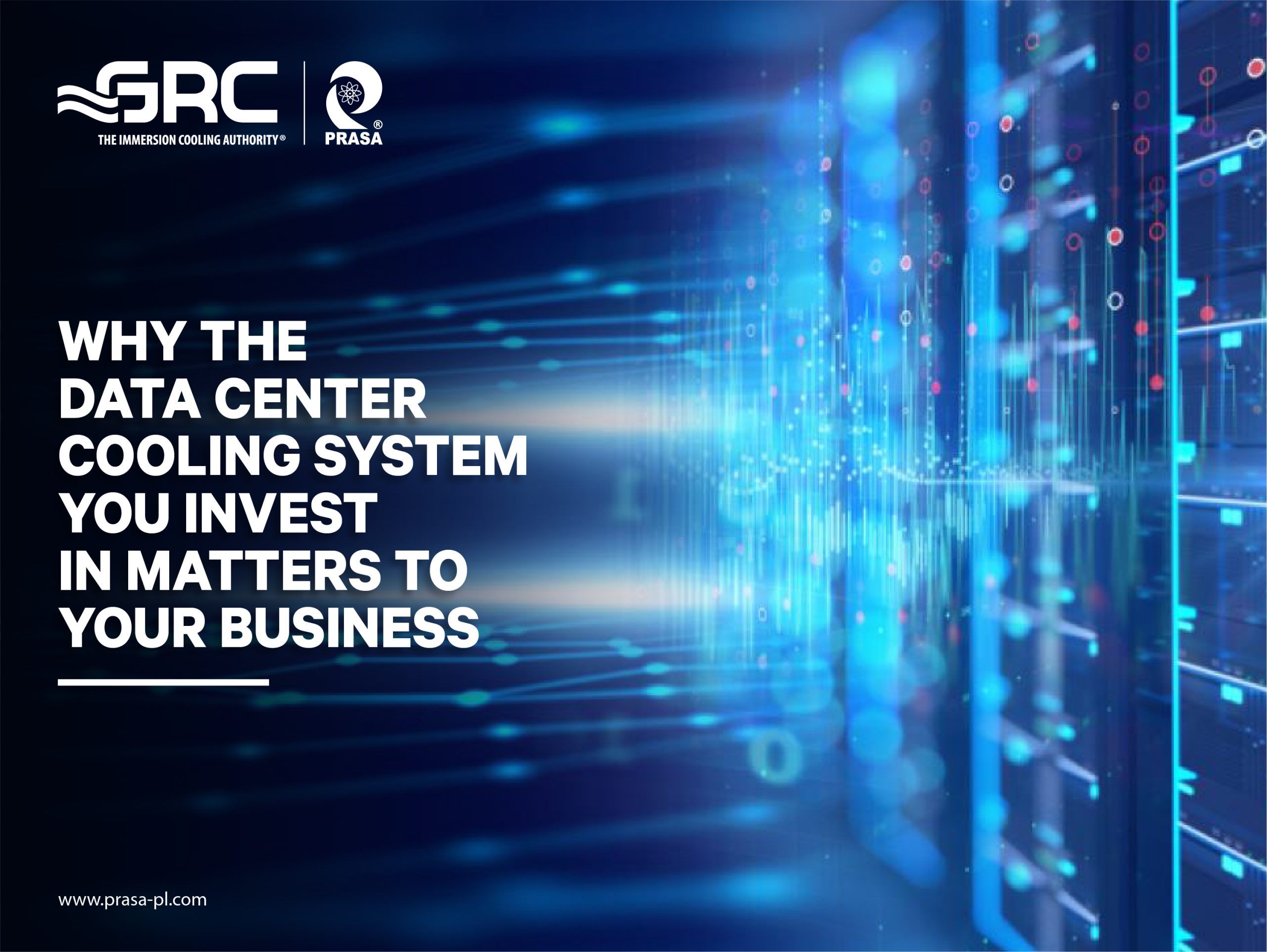
Cooling systems rank among the more expensive elements of a data center. Both operationally and in upfront costs, a cooling system is a sizable investment. It’s therefore important to consider your data center cooling system options carefully. The system you choose will influence your return on investment (ROI) and your facility’s performance.
There are several different types of cooling systems, each with their own design principles and capabilities. These cooling systems are not equivalent. In fact, the economic and technical differences among them are significant.
Many data centers run conventional air cooling, which works somewhat like an oversized air conditioner. While this was a decent solution for a number of years, it has trouble keeping up with the growing size of data centers. In response, a number of liquid-based cooling technologies have developed.
The liquid cooling technologies differ from each other in terms of how close the liquid coolant gets to the servers. For example, rear-door heat exchangers (RDHx) bring the liquid to the edge of the rack. Cold plate cooling pipes liquid right near the processors. Immersion cooling does even better by inserting entire servers directly into the liquid.
The cooling technology you use doesn’t just affect aspects of your data center; it also affects the wider environment. A lot is riding on this decision, so maximizing the benefits is important.
Your Data Center Cooling System Affects the Bottom Line
Cooling systems differ tremendously in their cost-effectiveness. A smart investment offers more bang for the buck: buy low, sell high. Each data center cooling system has upfront and long-term costs, which must be justified by the amount of server cooling they provide.
Traditional air cooling is one of the major upfront costs for data centers. Additionally, it forces operators to buy expensive and slow-to-acquire equipment, including generators, batteries, and humidity controls. Air cooling is more complex than liquid-based alternatives.
Since complexity translates into high upfront costs, it’s smart to look for a simpler cooling system. Of all the cooling technologies now on the market, single-phase liquid immersion is the simplest. It’s also extremely cost-effective.
A single-phase immersion cooling system from Green Revolution Cooling (GRC) uses only three moving parts, and the system doesn’t require complex and expensive modifications and additions to your facility. This elegant simplicity lets you literally halve the capital and operating expenses for your data center cooling system.
Find out for yourself how much liquid immersion cooling can save with this total cost of ownership (TCO) calculator.
The Cooling System Determines Your Computational Capacity
The underlying simplicity or complexity of a data center cooling system also affects its cooling capacity. Cooling systems vary considerably in their technical capabilities. The computational capacity is an important metric to consider in your decision, especially as processors use far more electricity and produce far more heat each year.
Air cooling is expensive, and it has limited cooling capacity. Because air is such a poor transporter of heat, it takes huge amounts of air blown over servers to achieve even minimal cooling. It also drives up the need for electrical infrastructure.
Liquid transports server heat much more effectively than air possibly can. This ability makes liquid cooling systems capable of handling larger computational loads. How much larger? For reference, many air cooling systems can only handle around 15 kilowatts per rack safely. By contrast, GRC’s liquid immersion can cool 368 kilowatts per rack.
PRASA | GRC’s immersion cooling system offers virtually unlimited cooling capacity. This enables your data center to run the increasingly powerful hardware necessary for today’s demands—and for tomorrow’s. You can fit more processors into a smaller space. And, if you want to run cryptocurrency hashing, scientific calculations, high-speed financial transactions, or any other intensive operations, you can.
The Whole Facility is Affected by Your Cooling System
 When you’re investing in a data center cooling system, you’re not just investing in the cooling system. You’re investing in the whole data center. Your choice impacts the entire facility, from the electrical and mechanical infrastructure to the IT infrastructure.
When you’re investing in a data center cooling system, you’re not just investing in the cooling system. You’re investing in the whole data center. Your choice impacts the entire facility, from the electrical and mechanical infrastructure to the IT infrastructure.
For example, air cooling systems require raised floors and complicated aisle containment. You’d also need the air handlers and chillers, plus a large floor space for air circulation. These requirements influence the design and construction of the data center, adding substantial costs. Air flow simulations and real estate aren’t cheap.
The good news is that liquid cooling systems streamline your whole operation. When you install PRASA | GRC’s liquid immersion Solutions, they take up minimal floor space, produce minimal noise, and require minimal electro-mechanical support.
Furthermore, the liquid coolant protects IT equipment against oxidation and corrosion, dust, vibrations, hot spots, humidity, and numerous other risks. Servers last longer with fewer repairs. In other words, your choice of the cooling system is also a choice to extend the life of expensive hardware.
Your Data Center Cooling System Affects the Environment
With more and more companies developing sustainability initiatives and striving for green data centers, it’s important to bear in mind the effects of technology on the environment. In addition to the financial investment, a data center cooling system generates indirect environmental effects that significantly impact society as a whole. The differences among cooling technologies are as stark ecologically as they are economically.
Traditional air cooling systems have many unrecognized yet devastating effects on the environment. In particular, they waste electricity and water while dumping carbon into the environment. These effects went by largely unnoticed for decades while the industry paid little attention to the environment, but now they’re untenable.
By contrast, PRASA | GRC’s liquid immersion cooling system is clean, using much less energy, water, and other resources. This green cooling solution fixes the serious ecological problems data centers are grappling with while boosting profitability throughout the data center and massively increasing computational performance.
Invest in the Smart Data Center Cooling System with PRASA | GRC
Liquid immersion cooling from GRC is twice as cost-effective as air cooling. It also supports 20 times more computation. The positive effects of liquid cooling extend throughout the data center and to the broader environment, making it a smart investment. Contact PRASA to begin your green cooling journey today..

